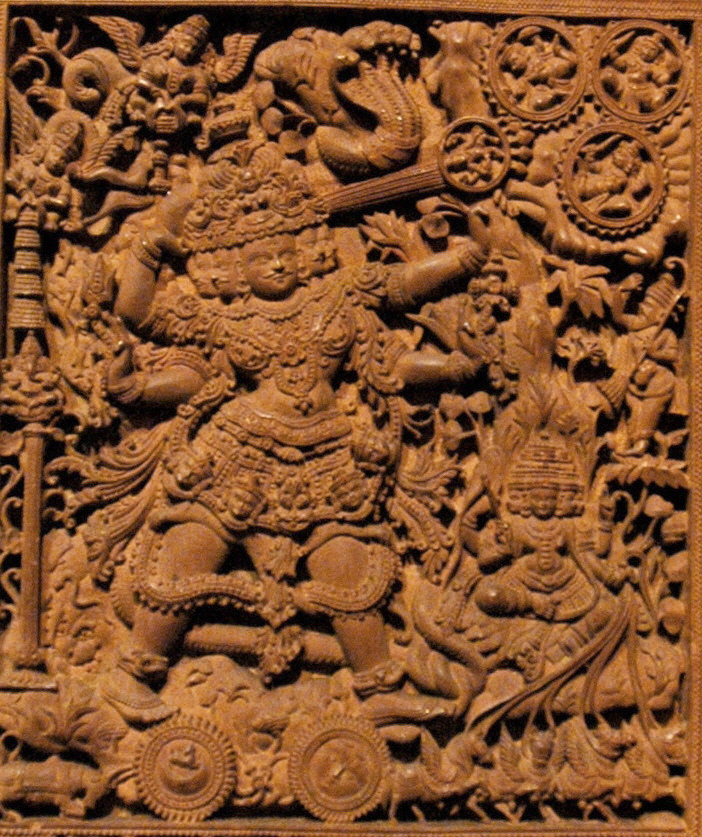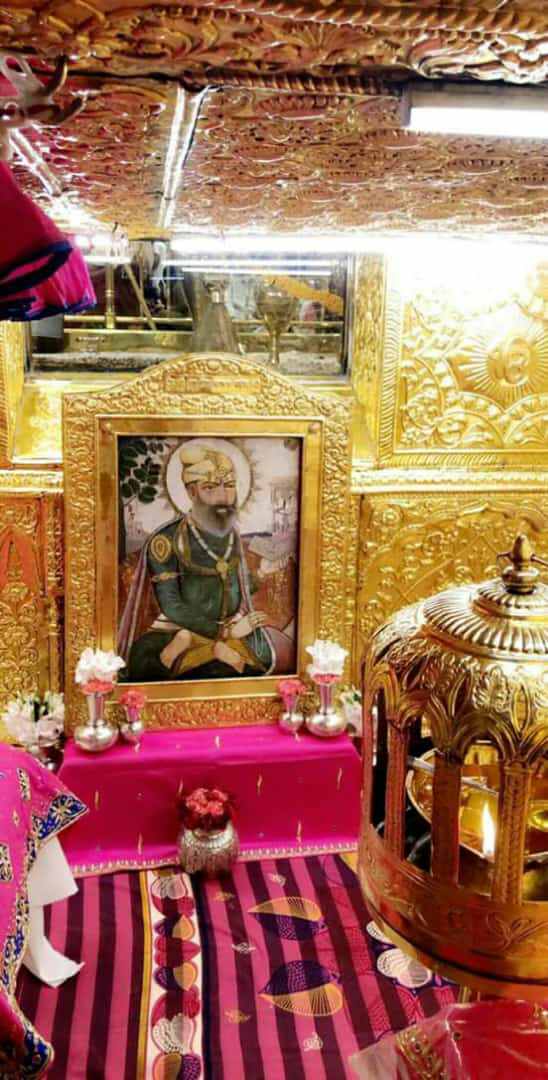|
Gaighat, Patna
Gaighat is a neighbourhood of Patna in the eastern state of Bihar in India. It is located on the southern bank of river Ganges in Patna. The southern flank of Mahatma Gandhi Setu bridge connecting Patna and Hajipur rises from Gaighat in Patna. One end of Pontoon Bridge (Peepapul) connecting Patna and Hajipur over the river Ganges is also located in the area. Gaighat is part of the wider Alamganj area in Patna. History Gaighat is an old neighbourhood of Patna and was earlier known as Gaughat. The word Gaighat is made up of two Hindi words Gai (Cow:English or Gau:Sanskrit) and Ghat. It is of historical and religious significance for Hindus and Sikhs. One of the oldest Gurudwaras in the region, Gurdwara Gai Ghat is situated in the area. Sikh Gurus Guru Nanak and Guru Tegh Bahadur visited the area in 15th and 16th Century. It is believed, Guru Tegh Bahadur made the river Ganges come in the form of "Gai" (cow) to a very old saint, Jaitamal, who could not go to the riverbank due t ... [...More Info...] [...Related Items...] OR: [Wikipedia] [Google] [Baidu] |
States And Territories Of India
India is a federal union comprising 28 states and 8 union territories, with a total of 36 entities. The states and union territories are further subdivided into districts and smaller administrative divisions. History Pre-independence The Indian subcontinent has been ruled by many different ethnic groups throughout its history, each instituting their own policies of administrative division in the region. The British Raj mostly retained the administrative structure of the preceding Mughal Empire. India was divided into provinces (also called Presidencies), directly governed by the British, and princely states, which were nominally controlled by a local prince or raja loyal to the British Empire, which held ''de facto'' sovereignty ( suzerainty) over the princely states. 1947–1950 Between 1947 and 1950 the territories of the princely states were politically integrated into the Indian union. Most were merged into existing provinces; others were organised into ... [...More Info...] [...Related Items...] OR: [Wikipedia] [Google] [Baidu] |
Ghat
Ghat, a term used in the Indian subcontinent, depending on the context could refer either to a range of stepped hills with valleys (ghati in Hindi), such as the Eastern Ghats and Western Ghats; or the series of steps leading down to a body of water or wharf, such as a bathing or cremation place along the banks of a river or pond, the Ghats in Varanasi, Dhobi Ghat or the Aapravasi Ghat.Sunithi L. Narayan, Revathy Nagaswami, 1992Discover sublime India: handbook for tourists Page 5.Ghat definition Cambridge dictionary. Roads passing through ghats are called . Etymology The origin of the English 'ghat' is sa, घट्ट , ' and is normally translated as ghaṭ, quay, landing or ...[...More Info...] [...Related Items...] OR: [Wikipedia] [Google] [Baidu] |
National Highway 30 (India)
National Highway 30 (NH 30) is a primary national highway in India. NH 30 connects Sitarganj in Uttarakhand with Ibrahimpatnam, Krishna district, Ibrahimpatnam, Vijayawada in Andhra Pradesh. The total length of this highway is . It starts at the junction of National Highway 9 (India), NH 9 at Sitarganj and ends at the junction of National Highway 65 (India), NH 65 at Ibrahimpatnam, Vijayawada. Development of Ibrahimpatnam-Jagadalpur Route is under process. Rajdeep Rohan joint venture is the contract agency for this project. Second bridge is under construction at pilgrimage city of Bhadrachalam which is famous for temple of Lord Shri Rama. NH-30 runs through the states of Uttarakhand, Uttar Pradesh, Madhya Pradesh, Chhattisgarh, Telangana and Andhra Pradesh in India. History Before renumbering of national highways, NH-30 route was variously numbered as old national highways 74, 75, 24, 24B, 27, 7, 12A, 200, 43, 16 and 221. Route NH30 starts at the city of Sitarganj connect ... [...More Info...] [...Related Items...] OR: [Wikipedia] [Google] [Baidu] |
Gulzarbagh Station
Gulzarbagh railway station, station code GZH, is a railway station in the Danapur division of East Central Railway. It is a part of the Patna railway hub which has five major stations: Patna Junction railway station, Patliputra station, Rajendra Nagar Terminal railway station, Gulzarbagh station, Danapur station and Patna Sahib railway station. Gulzarbagh is connected to metropolitan areas of India, by the Delhi–Kolkata main line via Mugalsarai–Patna route. Gulzarbagh station is located in Gulzarbagh city in Patna district in the Indian state of Bihar. Due to its location on the Howrah–Patna–Mughalsarai main line many Patna, Barauni-bound express trains coming from Howrah, Sealdah stop here. Facilities The major facilities available are waiting rooms, computerized reservation facility, vehicle parking. The vehicles are allowed to enter the station premises. The station also has STD/ISD/PCO Telephone booth, toilets, tea stall and book stall. Platforms There platf ... [...More Info...] [...Related Items...] OR: [Wikipedia] [Google] [Baidu] |
Kartik Purnima
Kartika Purnima is a Hindu, Sikh and Jain cultural festival that is celebrated on Purnima (full moon day), the 15th (or 30th) lunar day of the month of Kartika. It falls in November or December of the Gregorian calendar and is also known as Tripurari Purnima or Deva-Deepawali, the gods' festival of lights. Karthika Deepam is a related festival that is celebrated in South India and Sri Lanka on a different date. Significance Radha-Krishna In Vaishnavite tradition, this day is considered significant and special for the worship of both Radha and Krishna. It is believed that on this day, Radha-Krishna performed Raslila with their Gopis. At Jagannath Temple, Puri and all other Radha-Krishna temples, a sacred vow is observed throughout Kartika, and performances of Raslila are organized on the day of Kartik Purnima. According to other legends, Krishna worshipped Radha on this day. Shiva 'Tripuri Purnima' or 'Tripurari Purnima' derives its name from Tripurari – the foe o ... [...More Info...] [...Related Items...] OR: [Wikipedia] [Google] [Baidu] |
Makar Sankranti
Makar(a) Sankranti (), also referred to as Uttarayana, Maghi, or simply Sankranti, is a Hindu observance and a festival. Usually falling on the date of January 14 annually, this occasion marks the transition of the Sun from the zodiac of Sagittarius (''dhanu'') to Capricorn (''makara''). Since the Sun is regarded to have moved from the southern hemisphere to the northern hemisphere on this day in the Hindu calendar, the festival is dedicated to the solar deity, Surya, and is observed to mark a new beginning. Many native multi-day festivals are organised on this occasion all over India. The festivities associated with Makar Sankranti are known by various names ''Magh Bihu'' in Assam, ''Maghi'' in Punjab, ''Maghi Saaji'' in Himachal Pradesh, ''Maghi Sangrand'' or ''Uttarain'' (Uttarayana) in Jammu, ''Sakrat'' in Haryana, Sakraat in Rajasthan, ''Sukarat'' in central India, ''Pongal'' in Tamil Nadu, ''Uttarayana'' in Gujarat, and Uttar Pradesh, ''Ghughuti'' in Uttarakhand, ''Da ... [...More Info...] [...Related Items...] OR: [Wikipedia] [Google] [Baidu] |
Chhath
Chhath is an ancient Hindu festival historically native to the Indian subcontinent, more specifically, the Indian states of Bihar, Uttar Pradesh,West Bengal, Jharkhand, and the Nepalese provinces of Madhesh and Lumbini. Prayers during Chhath puja are dedicated to the solar deity, Surya, to show gratitude and thankfulness for bestowing the bounties of life on earth and to request that certain wishes be granted. Chhathi Maiya, the sixth form of Devi Prakriti and Lord Surya's sister is worshipped as the Goddess of the festival. It is celebrated six days after Deepavali, on the sixth day of the lunar month of Kartika (October–November) in the Hindu calendar Vikram Samvat. The rituals are observed over four days. They include holy bathing, fasting and abstaining from drinking water ( ''vrata''), standing in water, and offering ''prasad'' (prayer offerings) and ''arghya'' to the setting and rising sun. Some devotees also perform a prostration march as they head for the river ... [...More Info...] [...Related Items...] OR: [Wikipedia] [Google] [Baidu] |
Guru Tegh Bahadur
Guru Tegh Bahadur ( Punjabi: ਗੁਰੂ ਤੇਗ਼ ਬਹਾਦਰ (Gurmukhi); ; 1 April 1621 – 11 November 1675) was the ninth of ten Gurus who founded the Sikh religion and the leader of Sikhs from 1665 until his beheading in 1675. He was born in Amritsar, Punjab, India in 1621 and was the youngest son of Guru Hargobind, the sixth Sikh guru. Considered a principled and fearless warrior, he was a learned spiritual scholar and a poet whose 115 hymns are included in ''Sri Guru Granth Sahib,'' the main text of Sikhism. Guru Tegh Bahadur was executed on the orders of Aurangzeb, the sixth Mughal emperor, in Delhi, India.;;; Sikh holy premises Gurudwara Sis Ganj Sahib and Gurdwara Rakab Ganj Sahib in Delhi mark the places of execution and cremation of Guru Tegh Bahadur. His martyrdom is remembered as the ''Shaheedi Divas of Guru Tegh Bahadur'' every year on 24 November. Biography Early life Guru Tegh Bahadur was the youngest son of Guru Hargobind, the sixth guru: Guru ... [...More Info...] [...Related Items...] OR: [Wikipedia] [Google] [Baidu] |
Guru Nanak
Gurū Nānak (15 April 1469 – 22 September 1539; Gurmukhi: ਗੁਰੂ ਨਾਨਕ; pronunciation: , ), also referred to as ('father Nānak'), was the founder of Sikhism and is the first of the ten Sikh Gurus. His birth is celebrated worldwide as Guru Nanak Gurpurab on '' Katak Pooranmashi'' ('full-moon of Kattak'), i.e. October–November. Nanak is said to have travelled far and wide across Asia teaching people the message of ''ik onkar'' (), who dwells in every one of his creations and constitutes the eternal Truth. With this concept, he would set up a unique spiritual, social, and political platform based on equality, fraternal love, goodness, and virtue. Nanak's words are registered in the form of 974 poetic hymns, or ''shabda'', in the holy text of Sikhism, the Guru Granth Sahib, with some of the major prayers being the ''Japji Sahib'' (; ''ji'' and ''sahib'' are suffixes signifying respect); the ''Asa di Var'' ('ballad of hope'); and the '' Sidh Gosht'' ('discussi ... [...More Info...] [...Related Items...] OR: [Wikipedia] [Google] [Baidu] |
Gurdwara Gai Ghat
Gurdwara Pahila Bara, commonly known as Gurdwara Gai Ghat, is a holy Gurdwara of Sikh religion. It is located in the city of Patna, Bihar, India and dedicated to Guru Nanak Dev. The Gurdwara is part of "Guru Circuit" - A Government of Bihar initiative connecting important Sikh religious destinations in Bihar to attract more pilgrims. History The building where Gurdwara is located was initially Bhagat Jaitamal's house. Jaitamal, a pious man, confectioner by trade, became the Guru's follower and later converted his house into a Dharamshala. It was sanctified first by Guru Nanak in 1509 A.D. and later by Guru Tegh Bahadur along with his family in 1666 A.D. It is believed, Guru Tegh Bahadur made the river Ganges come in the form of "Gai" (cow) to Jaitamal, who could not go to the riverbank due to his old age. The Gurdwara was thus named 'Gurdwara Gaighat'. Location Gurdwara Pahila Bara is a historical Sikh shrine situated at Gaighat in the Alamganj area of Patna. It is the o ... [...More Info...] [...Related Items...] OR: [Wikipedia] [Google] [Baidu] |






